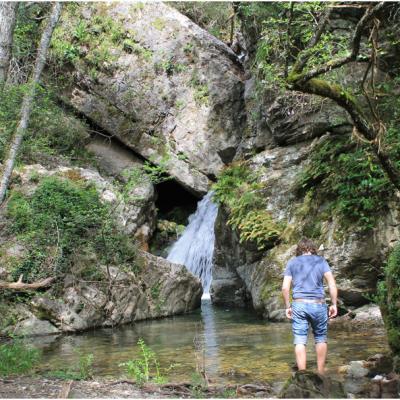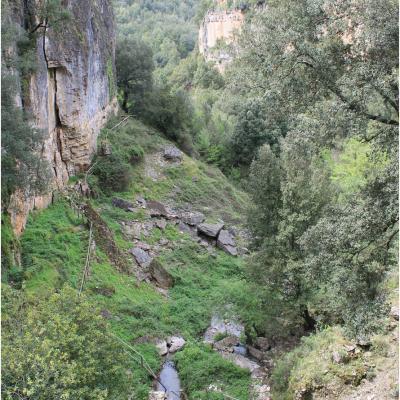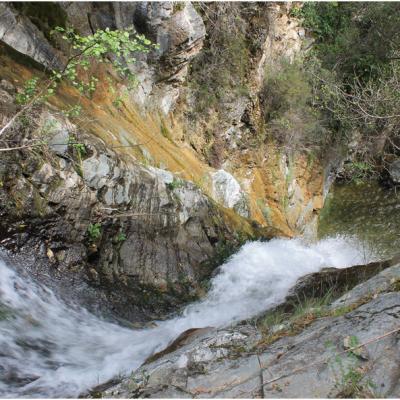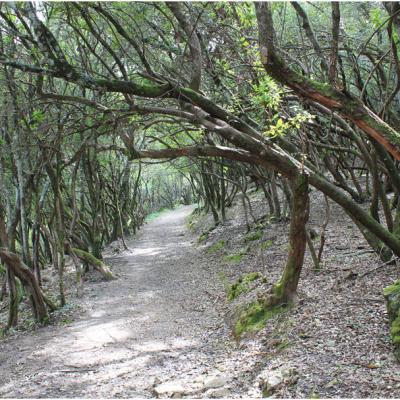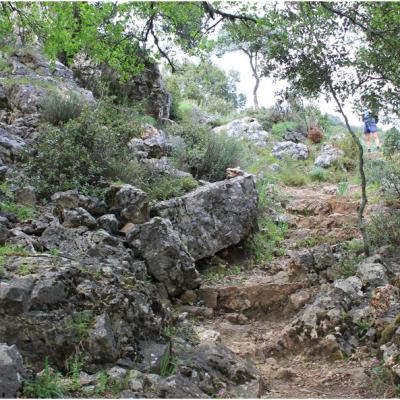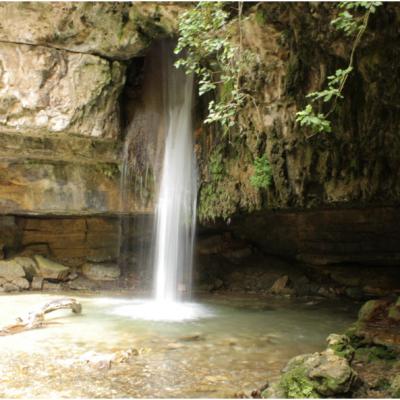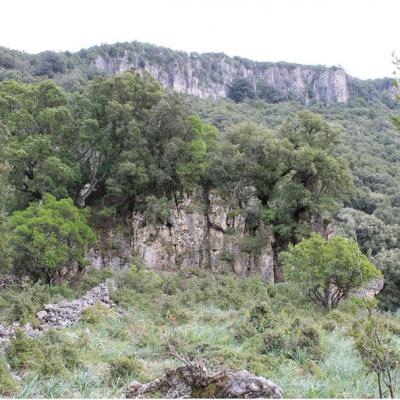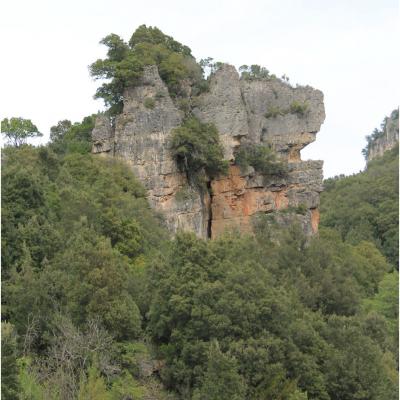SU STAMPU DE SU TURRUNU
The Land of the Fairies
Su Stampu 'e Su Turrunu
We'll hike in the hidden heart of Sardinia, Barbagia. More precisely, we will explore the territory of the municipalities of Seùlo and Sadali in order to visit the cave 'Is Janas' and the natural monument 'Su Stampu de su Turrunu'. At the end we'll visit Sadali, it's considered 'the kingdom of water' because inside the town flows the beautiful waterfall of San Valentino, its waters end in an underground abyss called "Sa bucca manna" (the big mouth). It will be very suggestive to take a walk in the streets of the town and to approach the fresh and rhythmic waterfall, a rarity. We begin our hike along the path n ° 203 of the Sardinian forestry authority, a few kilometers away from Sadali. We will walk for just over 9 kilometers immersed in the karst heels of the barbagia, crossing the entire valley created by the Rio Bau Procus, Rio Sa Perda Morta and Rio Caubid and Graba streams. When we reach the middle of path 203 we will dive into the beautiful Cannas forest.
The beautiful path, sometimes carved in the rock, will take us after 4 hours of walking to the waterfall of 'Su Stampu de Su Turrunu' created by the homonymous river that has flowed imperturbably for millennia. All you have to do is continue to 'Su Stampu de Su Turrunu', this is a singular waterfall immersed in the thick green of the Addolì forest. It is part of one of the natural monuments that make Sardinia proud of being able to boast of a truly unique diversity of the landscape. It evokes a karst phenomenon of extraordinary beauty so as to be now very well known and appreciated.
Water is the main actress of this amazing natural environment! It has dug, on the overhang of a limestone wall, a sinkhole where the water after diving from a height of about 8 meters magically reappears in a cave with a large pond in the center and transparent. This karst phenomenon has created millions of years in a ravine where the numerous streams letting their crystalline waters flow over the entire valley have allowed the creation of a natural environment rich in even rare plant essences where water takes on its role of main protagonist so much to be defined a "water landscape". The rush of water that breaks in the pond, the silvery reflections of the limpid and crystalline waters in movement give this natural environment an exceptional vitality.
The cave, however, with its regular and rounded shape, the lush vegetation that surrounds the environment, the limestone walls covered with mosses and climbing herbs and, above all, its gigantism create an emotion on the visitor that is difficult to forget and remove. Let's take advantage of this masterpiece that Mother Nature wanted to give to man too, let's stop to think, reflect and even refresh ourselves. Before leaving again towards the 204A path that will take us to the nearby Grotta delle Fate, let's say goodbye to the valley and delight in admiring the majestic granite walls. We can now graft onto path 204, later 204A, which will take us to the Grotta della Fate. The cave of Is Janas extends for 350 m, which can be visited almost entirely.
According to legend, the cavities were the home of three janas (in Sardinian mythology fairies / witches), these, very greedy, would have cooked their pancakes until late Lent, attracting with the scent of food a friar who passed not far from there. He, angered by the lack of respect for Lenten penance, allegedly reproached the three janas but was hanged by them. The divine punishment would have petrified the three witches, their kitchen tools and the same corpse of the friar, whose shapes are found inside the cave (hence some names given to the different rooms, such as S'Omu de is Janas and Su Mulinu).
Once the visit to the Is Janas cave is over, we just have to end our day in the 'kingdom of water'. The town of Sadali is located on the edge of the "Taccu di Sadali", a large limestone plateau. The inhabited center, a picturesque medieval village that probably originated before 1335, develops around the ancient parish church of San Valentino. Sadali is surrounded by a very varied and articulated territory, with woods rich in holm oak, oak, cork oak and cork oak. The toponym is of uncertain origin, but probably pre-Roman. In the Middle Ages it belonged to the curatoria of Barbagia di Seulo, in the 'Giudicato of Calari'.
The church of San Valentino of late Byzantine origin has a historical value. It is interesting to note that the sanctuary is the only one in Sardinia to be named after the Roman martyr who lived in the third century. Not far from the church there is a waterfall whose waters end in an underground abyss called "Sa bucca manna" (the big mouth). It will therefore be very suggestive to take a walk in the streets of the town and get closer to the fresh and rhythmic
Where: Sadali, Seulo
Kilometers: from 5 to 18
Difference in Altitude: from 200 to 800
Time Required: 2 to 7 hours
Difficulty: from E to EE
Trail: good condition trail
Meal: packed lunch
Water: 1,5 liters per person



